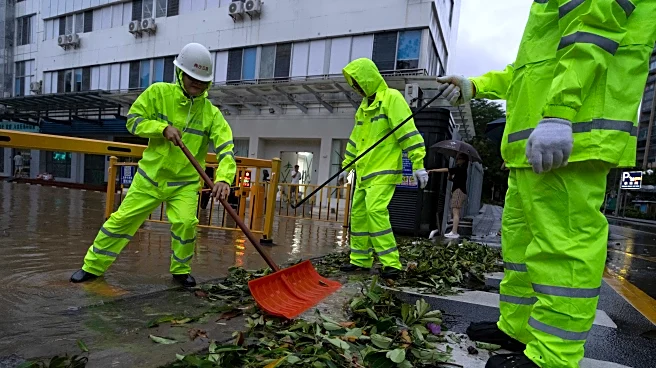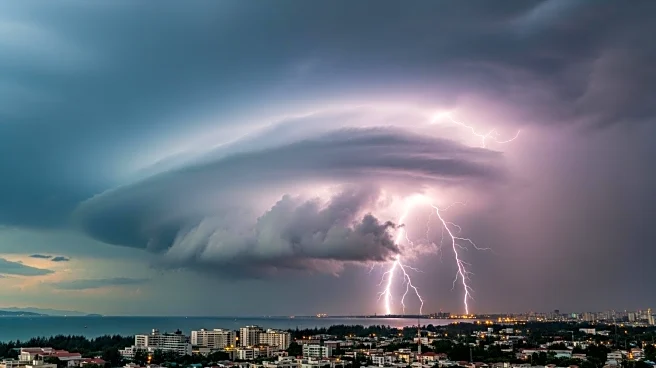What's Happening?
Typhoon Ragasa made landfall in Guangdong Province, China, after causing 18 deaths and injuries in the Philippines, Taiwan, and Hong Kong. The storm prompted the evacuation of over one million people in Guangdong, with Chinese authorities preparing emergency teams and allocating $21 million for disaster relief. Ragasa reached sustained wind speeds of 165 miles per hour, making it briefly the most powerful storm in the world this year. The storm's landfall on Hailing Island brought sustained winds of 120 miles per hour, equivalent to a Category 3 hurricane.
Why It's Important?
The impact of Typhoon Ragasa underscores the severe threat posed by powerful storms to densely populated regions. The evacuation and emergency response in Guangdong highlight the importance of preparedness in minimizing casualties and damage. The storm's path through Taiwan and the Philippines, causing fatalities and destruction, emphasizes the need for effective disaster management strategies. The allocation of disaster relief funds by Chinese authorities reflects the significant economic implications of such events, affecting infrastructure, agriculture, and local economies.
What's Next?
Following the storm's landfall, affected regions will focus on recovery and rebuilding efforts. The evacuation and emergency response in Guangdong will be crucial in minimizing further casualties and damage. Authorities will likely assess infrastructure resilience and disaster preparedness to better handle future storms. The broader implications for climate change and its role in intensifying weather patterns may prompt discussions on sustainable urban planning and environmental policies.












